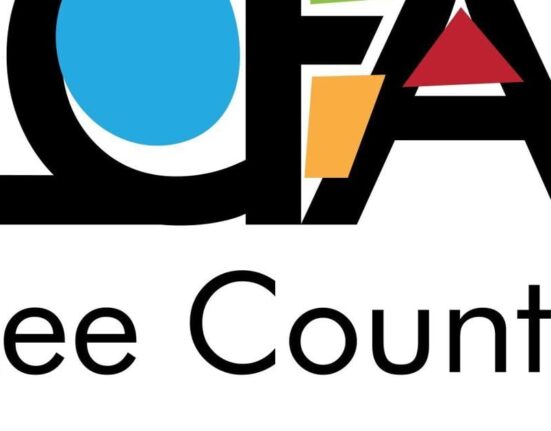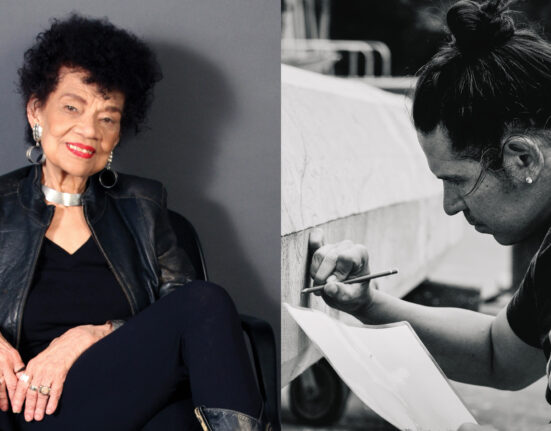A still from “La Potion (EH)” by Sara Sadik
Artist Sara Sadik’s visual novels and exploration games investigate loneliness. Initially commissioned for Frieze London, her latest work, “La Potion (EH),” addresses the changing emotional state of young men who struggle to express their feelings freely.
The artist examines the construction and the performance of a certain kind of masculinity, its ethical and moral codes, and what it reveals about societal structures more broadly. Through computer-generated scenarios, Sadik studies the conditions of children who grow up less advantaged, using storytelling and world-building to make these issues visible.
“La Potion (EH)” involves a long-form video and an in-car interactive video game. The film follows three maps: a journey from anxiety to melancholy, ending with serenity. Anxiety is represented by the forest, melancholy, the waterfall, and the beach sunset serenity— landscapes associated with our collective imagination. Meanwhile, in the gaming version, players can choose their own journey.
Born in 1994 in Marseille, France, Sadik investigates the crossroads of art, gaming and digital technology. Her video and performance practice lies halfway between fiction and documentary, with video games, anime, science fiction and even French rap informing her stories and characters who appear to be striving to achieve moral and physical transformation.
“La Potion (EH)” premiered during Frieze London in October, where I met the artist.
Sara Sadik and her husband, Emile who stars in “La Potion (EH)”
Tell me more about the project.
I play a lot of exploration and visual novel video games that are story-based. I like writing, and the video game offers the best medium for these stories. I created an exploration game for this project whereby you walk around it, like a ballad, if you will, through sound and objects. And we created an avatar based on the actor, my husband Emil, who is also in the film.
Why the human and avatar?
The avatar’s personality is based on the human actor, so the two think together, feel the same things, and can help each other through this journey and the emotions. They give something to one another. It’s an exchange. At the start of the video, the avatar appears as though he’s escaped the game as he says to the human actor: ‘To our shared secret, to the fusion of our souls.’
Tell me about the storyline and the player’s journey.
The story is about one character, Emil, and the game is created in fiction and real life to help his emotions. The film follows a path through three maps, starting with deep anxiety you cannot manage that becomes melancholy and finishes with serenity since both the actor and avatar are looking for peace. When the video is played in the car, the player can choose between these three maps or take the same journey as the film. We are human and will naturally feel negative emotions. So, it was super important for me to have the anxiety and the melancholy and how I can create image, effect, and sound that express these emotions.
A still from “La Potion (EH)” by Sara Sadik featuring Emile’s avatar
Your work deals with masculinity and trapped emotions. How did you come to this project?
Being from Marseilles, I meet a lot of people suffering from anxiety and loneliness. I’ve been doing storytelling workshops with teenagers for the last three years. When I talk with them, they express their deepest secrets and show weakness, fear, and hope—emotions they wouldn’t share with their family, friends or communities. These are mostly boys since the girls I meet have friends they can confide in. The boys in the workshops felt safe talking with me, possibly because I am a little older, not their teacher or mother, and I won’t judge. I knew then the urgency of creating a safe space for them to let go of their emotions and feel protected.
I am now working with young men in their twenties. In France, these men – who are mostly Black and from North African and Arabic backgrounds, my circle – are often seen as a group rather than individuals. So, it’s important to bring in and talk about the individual.
How do these workshops translate to your visual novels for video games?
I work with real-world and real-people experiences. I want to talk about loneliness as a place that can be scary, hard and sad. But it can also be a place where you can focus on yourself and better understand who you are. Loneliness has layers. So, for me, it is important to show the two sides of loneliness.
How do these visual novels and video games help someone who may be going through these emotions?
The game can be an escape but also a way to get to understand and express their emotions. The avatar character in “La Potion (EH)” doesn’t have a voice; Emil does. As a real person, it is he who has all these feelings, but when he says them through the avatar, it is expressed in a safe and easy way. When the avatar speaks of being lost in anxiety and of feeling vertigo, it’s what Emil is feeling, and the act helps him better understand his own emotions.
“La Potion (EH)” involves an interactive video game conceived alongside BMW’s interactive digital … [+]
You have been gaming since your teens, way before becoming an artist. What has gaming taught you?
It has expanded everything I know. I didn’t know I was going to be an artist then, but now I realize this thing that I played all those years ago helped me have the vision. The first time I visited a gallery, I couldn’t connect with the place; these were codes that were not open to someone like me. Then, when I saw the work of (Algerian-born French artist) Mohamed Bourouissa, it spoke to me. It suddenly all made sense. Similarly, the people I work with understand the codes of video games. They can connect to it.
Your art clearly has a great deal of agency. How do you see the potential of art?
I’m not delusional, and I know I can’t save the world. What I can do at my level is to help my people, if you will, through writing fiction and creating worlds. I see my work as a bubble for the men I work with. At the end of the day, they will return to their lives with all their struggles. I don’t have control over that. What I can do is create a safe space where they can have fun, express themselves and imagine the life they can have if they take another path. That is why it is important for me to end my stories through sound and visuals, with celebration.
A still from “La Potion (EH)” by Sara Sadik
Curated by Attilia Fattori Franchini for BMW Open Work, “La Potion (EH)” premiered during Frieze London in October 2023.
See the work of artist Eva Nielsen at Paris Photo 2023, read about artist and filmmaker Shirin Neshat’s politically charged “The Fury,” photographer Kyle Weeks at David Hill Gallery, and filmmaker Steve McQueen’s moving film installation “Grenfell.”







